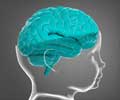A 'puncture repair kit' for cells, that can repair burst cell membranes in the brain has been developed by Punchstock researchers. This kit may help prevent brain damage after serious head injuries.
This new treatment may also help trauma victims avoid the severest injuries and the researchers showed that when brain-injured rats that are injected with a polymer called polyethylene glycol (PEG) soon after their injuries, they recover certain behavioural abilities better than untreated rats.According to the author of the study, Richard Borgens of Purdue University in West Lafayette, Indiana said that the therapy "does not require sophisticated technology."
"It requires sophisticated thinking. It acts by absorbing water, promoting the healing of cell membranes and preventing "the exchange of things that cause decay and degeneration of the cell," Nature quoted Borgens, as saying.
He further added that the moment PEG reaches human trials; it could be carried by trauma units and administered as soon as emergency crews reach victims of blunt-force trauma.
In order to get uniform results, the authors gave a standard injury known to damage certain regions of the brain by dropping a weight onto 47 rats. Then the researchers injected a solution of PEG into the rats' bloodstreams 2 hours, 4 hours or 6 hours after the injury.
It was found that the PEG treatment successfully improved behavioural results for the rats treated within 4 hours of injury. Also, people who were treated after a six-hour delay did not recover any more behavioural performance than the untreated rats.
Advertisement
"These therapeutics could have side effects that would render the behavioural abnormalities worse, even if the histological abnormalities were improved, so it is very important that behavioural assessments are performed," said Brody.
Advertisement
While Borgens said that the treatment will go for clinical testing within two years by an industrial licensee, but he claims that this work is gradual and is not a cure for victims of brain injuries.
"The idea that one treatment is going to give them an enormous change in quality of life or actually cure them is foolishness. We shouldn't talk about that. What we should talk about is how we can improve their quality of life," he said.
The study is published in this week's Journal of Biological Engineering 1.
Source-ANI
RAS/L















